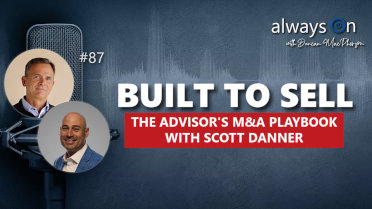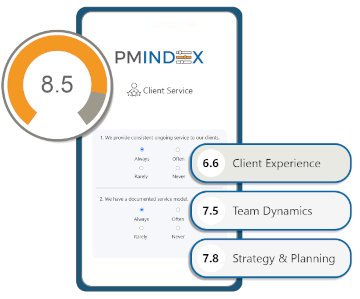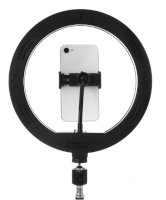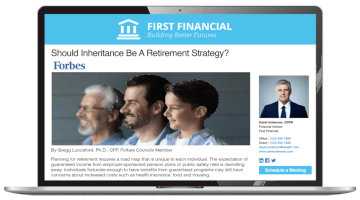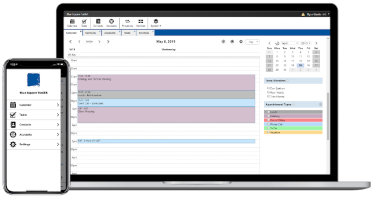8 steps to Successful Client Meetings

Be Organized & Professional: Use an Agenda
An Agenda is instrumental in ensuring you deliver a consistent and professional financial planning review meeting process. It’s really not that difficult to implement. And, once you start to see the benefits it creates in terms of simplifying both meeting preparation and delivery, you’ll be hooked. Not only that, your clients will take immediate notice of your more structured and organized approach to meeting with them. Who knows, maybe some of those ‘hard to get in’ clients won’t be so difficult any more. This could be exactly what they were waiting for.
When you provide an agenda to each meeting participant, you are signalling the beginning of the business part of the meeting. Therefore, before you do so, be sure you start the meeting off with some rapport building with the client. Establishing rapport is important to set a positive tone before diving into business. Limit this to no more than 5 minutes and then begin the meeting.
Here’s an overview of how to walk through our standard review meeting agenda.
- Meeting Overview. You need to begin by providing a brief overview of the meeting, which simply means walking the client through the bulleted topics on the agenda. The “Meeting Overview” should be at the top of all of your agendas.
- Introducing Us to Others. It is important to remind your clients in a consistent way that you have a defined process for how others are introduced to you. That way, when your client knows someone who could benefit from your services, they will already understand the process you have for bringing them on. Remember, this is not an ask; it’s an educate. There is a profound difference. And, for that reason, be sure you cover this part of your meeting in a very matter of fact, low key manner. Although this topic only takes a couple of minutes to cover, it’s very important and can have a significant impact on the quantity and quality of introductions you receive from your existing clients. We recommend you develop a script to follow and commit it to memory. It is also important to note this agenda topic is deliberately at the front of the meeting agenda and should stay there. This process is important and you don’t want it to be perceived as an after thought. The “Introducing Us to Others” should be included on all of your agendas.
- Our Approach. Next you need to take a few minutes to quickly review with your client your financial planning approach. Again, this serves as a reminder and ensures we don’t take for granted that they know all that we do. This reinforcement ensures that when speaking to others about you, your clients are very clear about the types of financial planning services you provide. We also recommend you develop a script to follow and commit it to memory. This item should also be included on all agendas.
- Review Your Clients Goals and Objectives. Here’s where the financial advisor focus ends and the client focus begins. You should begin with a quick recap of the goals and objectives of your client. This will reinforce the long-term focus of your financial planning services; it’s the “why” that supports the “how” in what you do. It will also provide you with an opportunity to capture any relevant changes with respect to their goals and objectives, which may impact the financial strategies you implement on their behalf. This is important for you to continue to do the best job possible for your client.
- Strategy Review. This is a main part of the meeting where you would review all of the financial strategies you are implementing on their behalf. This may include the following types of strategies: retirement savings, educational savings, family security, insurance and estate planning – and anything else you are implementing on their behalf. Of course, any concerns or changes you would recommend about these various strategies would be discussed at this time. Similarly, we would expect any clients to discuss with you the concerns or questions they have about any of the strategies you are implementing for them.
- Investment Update. This is where you provide an update specific to their investment strategies. This can involve more detail and may or may not evoke questions from your clients. Any changes you recommend to their investments would be communicated at this time.
- New Business. This provides everyone with an opportunity to discuss items not included on the standard agenda. This is an important feature to ensure clients know their financial planning concerns and issues will be discussed and/or addressed in the context of their review meeting. It also allows you to record any new items that need future follow up.
- Where Do We Go From Here? At the conclusion of the meeting you can wind up by letting them know what happens next. This may be one of the following scenarios:
- Everything is fine and you look forward to seeing them at their next financial planning review meeting in six months or a year (however frequent their review happens to be scheduled). Make sure you tell them you are always available should they have any questions. And, end by letting them know it was a pleasure to see them again.
OR:
- Changes are required and will be managed accordingly. This may trigger follow up actions by you, your staff and/or the client. Let your clients know what to expect in terms of their next point of contact on what was discussed: this includes who and when.
It is important to document all follow up items accurately so nothing falls through the cracks. Use your agenda as the place to record follow up action items accordingly. This makes it easier to delegate and hand off to your assistant who can trigger the follow up actions accordingly for those involved. Again, make sure you tell your clients that you are always available should they have any questions through this period of transition while the changes are taking place. Again, end by telling them it was a pleasure to see them again.
You should always conclude each meeting with a “Where do we go from here” type of wrap up. This ensures both you and the client are clear on the next step in the process.
And with that, the review meeting concludes. Everything was covered. You finished on time. You are pleased with the process and even more so, your clients are. It’s clearly a win-win.
Finally, it’s also important to standardize any meeting tools you use during the course of your client review meetings. This might include financial fact finders, questionnaires, reports or process diagrams. So, once you have your agenda templates completed, you can endeavour to tackle that. The more consistency there is in the client meeting process, the better – for everyone.
Continued success!
Contributed by: Duncan MacPherson


